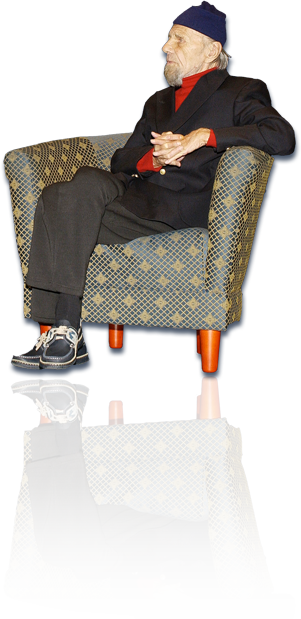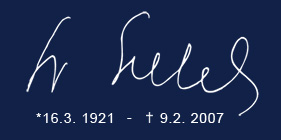
Sulek - a painter of colours

Art work
Svatopluk Sulek’s entire work is remarkable for its richness and variety of colour that is typical of Ferdinand Léger’s Paris school. It reflects the authenticity of personal experiences when looking at the world. In particular the countryside and the strong desire to get to know far-off lands which led him to his sea motifs. The colour blue – the colour of the sea also dominates among the other lines that Svatopluk Sulek uses in his paintings. The sharp outline drawings consistently separate the individual images and the brightly coloured field filled with a mosaic still remind us today of the strong influence that his teacher, Fernand Léger, had on him.
The sea, harbours, cliffs, boats, barques, fishing villages and the undersea world, as well as the lives of sailors and fishermen are themes that are repeated in motifs from France, Morocco and especially sunny Corsica, they are then followed by paintings from Egypt, India and Greece enriched with people. Landscape paintings predominate from Yugoslavia, Romania, Slovakia, and on his return to his homeland there are landscapes from south Bohemia and a series of views of Prague architecture and secluded spots.
Another creative landmark is his series entitled The Pub, in which colour is what is important. Svatopluk Sulek feels life and people in colour, his self-portraits and paintings of people in this series are proof of this.
For him his work was a beautiful adventure, always new and always alluring.
“I WOULD LIKE TO SAIL AGAIN LIKE A PAINTER. SO I BEGIN ANOTHER PAINTING AND I LOOK FORWARD TO THE ADVENTUROUS JOURNEY THAT IS OPENING UP BEFORE ME…”
“When looking for an intense form that is timeless as a means of balance in life, I use the rule of contrasts. I introduce an opposition of values, the contradictory nature of lines and colours.” These words were spoken in 1912 by the great French painter, Fernand Léger but they could just as easily have been said by his pupil, the Czech painter Svatopluk Sulek who studied from 1947 until 1950 in the studio of Professor Fernand Léger at the Académie Moderne, number 104, Boulevard de Clichy, in Paris.
After the Second World War the Académie Moderne in Montmartre where the Boulevard de Clichy is to be found was full of pupils from all over Europe. Poles, Scandinavians, Englishmen and Japanese appeared at Léger’s lectures. They all then took part in the Académie’s annual students’ exhibitions. Professor Léger always corrected his pupils’ work on Friday. For hours he would assess the work and say: “You are here to work for yourselves. Do not be afraid of my influence, for a time you can let it have an effect on you. We have all gone through this. No one is born a master. One day you will say: to hell with Léger! And from the time you spend in this studio keep what you consider to be beneficial for the development of your own personality.”
The painter Svatopluk Sulek rubbed shoulders and studied in this environment and it is obvious that he took these words to heart. At this time, after the end of the Second World War Paris was the absolute Mecca for artistic endeavours. Such greats as Matisse, Vlaminck, Chagall, Zadkine and others lived and worked here. Picasso was at the peak of his career. Quarters such as Montmartre and Montparnasse were full of painters, poets, sculptors and other artists. It was a golden era for the fine arts following on from the pre-War avant-garde. This was the environment that Svatopluk Sulek, not yet thirty years of age, found himself in and here he formed his creative mind and admiration for lines and colour.
After returning to Czechoslovakia in 1951 he continued to study at the Academy of Fine Arts in Prague in Professor Vlastimil Rada’s studio but he was not granted the title of artist until 1958 when he exhibited his paintings at the Czechoslovak Writer’s Gallery with great success.
During his rich life Sulek painted not only in France and on Corsica but also in Egypt, Morocco, Algeria, Yugoslavia, Greece and elsewhere. He found his paradise and the inspiration for his future artistic work on Corsica.
Reality for him represents a clear and understandable form, free of any ambiguity and integrated in a clear outline drawing accompanied by vibrant colours. This was all typical of Fernand Léger’s Paris school. The dominant colour in his paintings is blue – the colour of the sea which he was always attracted to and which he often visited. This can be seen in his paintings that emphasise sea motifs, whether they be figurative paintings of fishermen’s children, undersea motifs or sailors. Paintings such as Ramadan, The Arab, The Hand, Lying Down and others enchant us with the colours and shapes of the Orient. Another beautiful painting is Sulek’s self-portrait done in the style of Hemingway and in lively colours. In general Sulek experience life and people in colour and that is the alpha and omega of his work.
At one time he sailed with a Czechoslovak ship around the Cape of Good Hope to India and back like the ancient mariners. He spent time with Breton fishermen and lived their life. Travelling, distance and the sea are the main sources of inspiration for his rich artistic work. Svatopluk Sulek paints carefully, sometimes it may even seem naively, he has a romantic soul and through his natural, universally comprehensible and simple art he wants to mark a return to simplicity which creates all the more compelling an artistic impression.
As well as motifs of the sea and far-off lands, he also painted Prague and southern Bohemia where he lived and worked. He liked old Prague, Malá Strana and Prague Castle, their architecture and secluded spots, Prague in spring with the chestnut trees in blossom, the south Bohemian countryside with its beautiful baroque gables and ponds on village greens.
The Pubs series has a special place in Svatopluk Sulek’s work. In it in a very funny and exaggerated way he portrays well-known and famous figures in Czech and world history alongside each other, whether it be Picasso, the Pope and Jan Hus or Švejk, Čapek and Bohumil Hrabal. In particular Hrabal’s hand gesture is so believable and distinctive that a smile and a memory unwittingly light up the faces of those that knew him personally or had the opportunity to “sit with him in the pub”. This is probably how every great Czech writer would like to be remembered and this has been achieved in Sulek’s painting.
Sulek’s entire expressive and optimistic artistic work assures him a special place among Czech painters of the 20th and 21st centuries. They are painters, whose work cannot be measured by the number of works exhibited, paintings sold and prizes and awards received but by the extent of the love and feeling and sense of beauty and joy that they give out. And Svatopluk Sulek belongs among such painters.
Jiří Karbaš 2004

